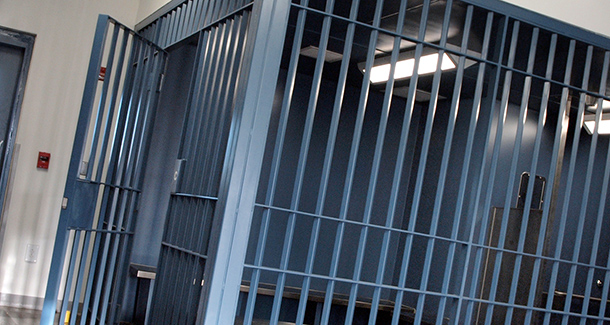
(Photo Credit: H. Michael Karshis/Flickr)
In 2014, San Bernardino was one of many California counties facing the challenges of realignment, which meant jails were overcrowded and services for inmates, especially those with mental illness and substance abuse disorders, were limited. That’s when county leaders decided to use data-driven analysis to help them determine how best to lower their jail population while maintaining public safety.
San Bernardino turned to CA Fwd’s Justice System Change Initiative (J-SCI) team, which was already working with neighboring Riverside County, to study who is in the county’s jail system and why, then to develop services and management practices to lower jail populations.
The J-SCI team analyzed 2015 jail data and recently presented its findings to the county’s Law and Justice Committee and the Reentry Collaborative. The study showed areas of opportunity to lower the jail population through system change. For instance, nearly 75 percent of the average daily jail population is pending trial, which could open discussion to maximize pre-trial releases and programs. It also showed that most new crimes were drug or alcohol related, an issue that can be addressed through cross-system substance use and abuse programs. Some of study’s findings have already led to changes within the county’s criminal justice system.
“The jail utilization study supported the fact that we needed other partners at the Law and Justice (Committee) table, particularly behavioral health and public health,” said Assistant Sheriff Shannon Dicus, pointing to the fact that that the mentally ill were booked more often and stay in jail longer for lesser crimes. Dicus added, “What the jail utilization study did was really took a look at the load on the jail itself and supported that opinion of this resource sharing.”
Since the report was presented, the Department of Public Health and the Department of Behavioral Health have been added to the committee, which previously included departments directly connected to the criminal justice system.
“Having a seat at the Law and Justice Committee table allows us as a county to expand the variety of services available to those incarcerated, especially with mental illness and substance abuse issues, which can lead to successful reentry into the general community,” said Dr. Maxwell Ohikhuare, a San Bernardino County DPH health officer. Dr. Ohikuare also leads the Reentry Collaborative, which is a partnership of agencies, organizations and individuals dedicated to successful reentry and long-term success of the formerly incarcerated.
Sharing resources has led to the creation of Corrections To A Safer Community program, a collaboration between the Public Defender, Department of Behavioral Health and the Sheriff’s Department. Through this program, a response team will look at inmates who committed minor crimes and were identified at booking as having a mental health issue as they are being prepared for release. The team works on a plan to place the inmate into community programs with approval from the District Attorney and other interested parties.
The Public Defender previously had its own diversion program but, according to Dicus, “What the study did was really put them (Public Defender and Behavioral Health) both together and show how this type of process, not only helps reduce the load on jails, but potentially puts people where there’s more appropriate treatment going on rather than just being incarcerated.” Although the program was started in January 2017, preliminary results from the program are promising.
“We are encouraged to see San Bernardino take the data provided and use it to make changes within its criminal justice system,” said CA Fwd J-SCI lead Scott MacDonald. “By engaging with different departments and creating collaborations and new programs, San Bernardino will continue on the path to successful outcomes.”
Besides Riverside, CA Fwd is conducting jail studies and preparing recommendations for El Dorado County and Santa Cruz County.
Working with CA Fwd’s J-SCI team, San Bernardino County presented a panel discussion and participated in the Federal Reserve’s statewide conference, Reentry Solutions: People, Programs and Policies as well as participated in the recent statewide Stepping Up conference.
In the next few months, the jail study, its recommendations and Stepping Up recommendations will be presented to the Board of Supervisors in a workshop format. The goal is to have the ability to use data to inform the county’s decision-making process as well as ongoing data analysis.
According to Dr. Ohikuare, data analysis is key. “The data in the jail study gives us a good look at who is in our jails and why. This in turn gives us a better understanding of what programs we can either expand or implement to create better outcomes for our affected populations.”
Because the County hadn't had this kind of data model before, Dicus said the CA Fwd study gave them the ability to establish the basic work and find out more about which services are needed. “We might find out that that’s not possessed in my jail data, maybe it’s possessed in probation data, or the court’s case data,” said Dicus. “But we can work together to pull out the data sets that allow us to create a decision–making model and I think that’s one of the things that’s key that the report brought about.”

